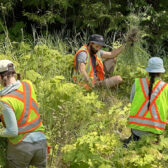SD8 schools begin implementation of new cell phone restriction policy
The three R’s of academics will have a fourth as cell phone usage will now be restricted in schools across the district, starting this week.
Similar to schools across the province, the schools of School District No. 8 (Kootenay Lake) will adhere to a district student code of conduct — developed by the SD8 board trustees — that addresses each school’s code of conduct regarding personal digital devices.
Each of these school codes of conduct describes the acceptable conduct related to use of personal digital devices (cell phones included), and follows provincial policy and direction, said Trish Smillie, SD8 superintendent.
“All school districts now have policies in place to restrict cellphone use at school,” she said. “These policies address when students can use cellphones at school, while also considering the use of devices for accessibility and medical needs. Policies may differ between school districts and age groups.”
The codes are on display in each school.
Also this year school, cardiopulmonary resuscitation (CPR) learning will become mandatory for all students prior to graduation — with 90 per cent of public secondary schools already offering CPR learning.
The Safe Access to Schools Act gives the Province the legal authority to prohibit people from interfering with safe access to school grounds. Access zones are in place at K-12 schools, and police can arrest or issue tickets to anyone found impeding access, disrupting or interfering with educational activities, or attempting to intimidate an individual within 20 metres (66 feet) of school property.
School policies
Although each school’s policy varied somewhat, the constant theme was “Students can only use personal digital data devices (any device that can access the internet) for instructional purposes and digital literacy while on school property and during hours of instruction. The school’s learning environment is free from the use of technology — outside of structured classroom learning activities.”
Hume
“The presence of electronic devices, such as smartphones, smart watches, Bluetooth earphones, or commercial collectibles such as trading cards detracts from the kind of play and interaction that we promote at school. Therefore, we ask that electronic games, electronic devices, trading cards, etc. stay at home.”
Blewett
Students will not bring digital devices to school unless granted special permission by the principal. Digital devices include cell phones, cameras, gaming devices, etc.
LV Rogers
“With the intentions of overcoming challenges with concentration, distractibility, engagement, and mental health, students will only use personal digital data devices for instructional purposes while on school property during hours of instruction.”
The policy applies to all areas of the LVR school campus, including the library, hallways, bathrooms, courtyard, gym, cafeteria and multi-purpose room. This also applies at all school functions. Personal digital devices include any device that has internet access, texting, music, or gaming capabilities.
“(P)ersonal digital devices should not be seen nor heard in classes, nor should they be distracting students while in their pockets. Teachers may direct students to use their personal digital devices for specific learning activities and teachers may direct students to place their personal digital devices in a cell phone hotel on silent mode.”
Rosemont
The use of personal digital devices will be restricted at school to promote learning and engagement.
Trafalgar Middle School
“Students are required to place their personal devices in the cell phone hotels in their classrooms by the start of instructional time. Students unable or unwilling to comply with this school-wide requirement will have their personal devices managed in the centre by the Trafalgar admin. team. Students are not permitted to use their own devices for learning tasks as the school provides those devices and network access for them.”
South Nelson
Students are asked to keep all personal digital devices at home. However, if parents deem that a student requires a digital device — for communication to and from or after school — it is to be discussed with the teacher. The device will be kept powered off in the students’ backpack until the final bell.
Redfish
“As such, Redfish students neither need nor are permitted to be in the possession of any personal electronic devices ― including, but not limited to, cell phones, tablets, smartwatches, portable media players, handheld gaming consoles, and so on ― at any point during the school day.”
Wildflower
Students in kindergarten to Grade 6 should not bring a personal digital device to school unless there is a specific identified need.
Students in Grade 7 to 9 can bring a personal digital device to school, but it must be given to their teacher for safe keeping during the day.
“Any student unable to cooperate with these school-wide standards designed to support a positive learning environment will have their device stored safely in the office for them to retrieve at the end of the day.”

























